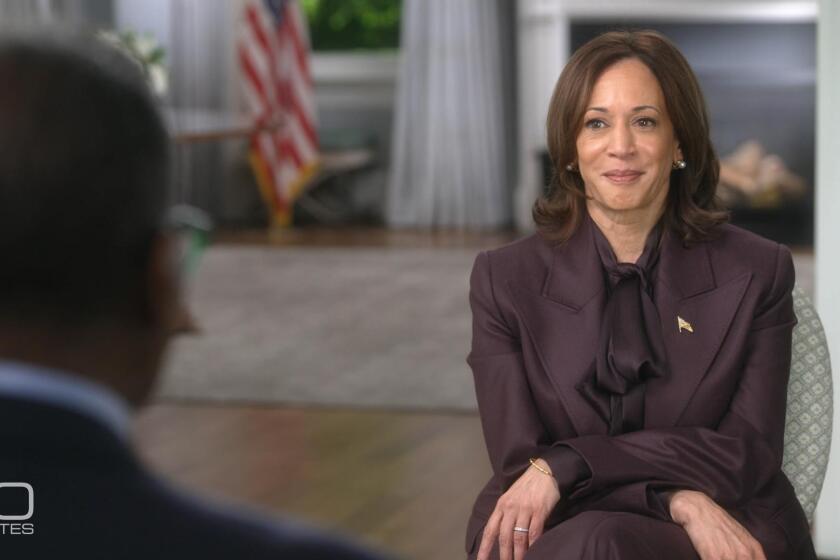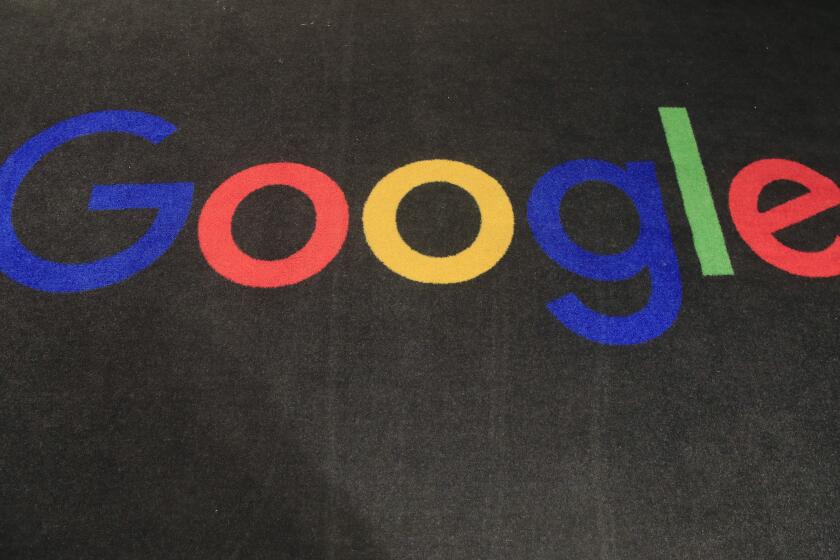Pixar co-founder and computer animation pioneer Ed Catmull is retiring
- Share via
Ed Catmull, the Pixar Animation Studios co-founder who helped pioneer the computer-animation industry and led Walt Disney Co.’s animation business to its contemporary renaissance, is retiring.
Catmull, 73, the longtime president of Pixar and Walt Disney animation studios, will step down from his current role at the end of the year, Walt Disney Studios said Tuesday. He will stay on in an advisory role through July and will not be replaced, the company said.
Catmull’s retirement marks the end of an era for Pixar and Disney. At Pixar, he and co-founder John Lasseter were credited with turning the studio into an animation juggernaut with such hits as “Toy Story,” “Finding Nemo” and “The Incredibles.” When Disney bought Pixar in 2006, it named Catmull president of its overall animation business, which went on to produce mega-hits, including “Frozen.”
“I have the mixed emotions that come with stepping away from a group of people I love, but also with the utmost pride and pleasure that we now have at both Pixar and Disney Animation, the most dedicated and imaginative leaders I have worked with,” Catmull said in a statement.
The news comes less than five months after Lasseter stepped down amid allegations of inappropriate workplace behavior. “Inside Out” director Pete Docter and “Frozen” co-director Jennifer Lee were named chief creative officers of Pixar and Disney Animation, respectively, in June, replacing Lasseter. Docter and Lee both report to Walt Disney Studios Chairman Alan Horn.
Pixar President Jim Morris and Walt Disney Animation Studios President Andrew Millstein will continue to oversee operations of their respective studios, reporting to Walt Disney Studios President Alan Bergman, Disney said. They were elevated to their positions in 2014.
In many ways, Catmull came to Hollywood as an outsider. He grew up in Salt Lake City in a conservative Mormon family, idolizing Albert Einstein and Walt Disney. He worked briefly as a computer programmer at Boeing Co. in Seattle after graduating from the University of Utah, but returned to his home state for graduate school.
The soft-spoken Catmull pioneered some of the earliest techniques for computer animation such as texture mapping. His 1972 student film “A Computer Animated Hand” was one of the earliest examples of 3-D-rendered computer animation and was inducted into the National Film Registry.
“Ed Catmull is one of the central figures in the creation of digital media that so transformed Hollywood,” said Tom Sito, an animation professor at USC. He is “the research scientist turned movie mogul.”
Catmull’s exit caps a more than four-decade career shaping the future of the film business. In 1979, “Star Wars” maestro George Lucas hired Catmull to create a computer group at his Northern California studio, Lucasfilm, when Catmull was running the computer graphics lab at the New York Institute of Technology. It was there that he hired the buoyant animator Lasseter, following a longtime philosophy of hiring the best available talent.
Catmull is credited with helping persuade Apple co-founder Steve Jobs to acquire Lucasfilm’s computer division in 1986 and rename it Pixar. Early on, Pixar and Disney collaborated on the revolutionary Computer Animation Production System technology used in films such as “The Rescuers Down Under” and “Beauty and the Beast.”
Though his presence looms large in the animation community, Catmull kept a low profile at Pixar. He has sometimes joked that next to co-founders Jobs and Lasseter, he was “the Pixar founder no one’s heard of.”
Still, people at the Emeryville, Calif., studio often repeated his management theories, including his belief in listening to everyone’s ideas and not operating out of fear. Pixar released the world’s first feature-length computer-animated film, “Toy Story,” in 1995 and has since won 15 Oscars and grossed more than $13 billion at the box office. Its 20 films have all been released by Disney.
When he took over Walt Disney Animation in 2006, Catmull brought his leadership style to the studio, which was struggling to create hits as audiences shifted away from Disney’s traditional hand-drawn filmmaking style. Under Catmull and Lasseter, the company embarked on a stunning turnaround, releasing successes including “Zootopia” and “Moana.”
Drawing on his own experiences at Pixar, in 2014 he published a book co-written with Amy Wallace titled “Creativity Inc.,” about how to launch a creative organization. In the book he emphasized the values of teamwork and a willingness to make mistakes.
“Failure isn’t a necessary evil,” he wrote. “In fact, it isn’t evil at all. It is a necessary consequence of doing something new.”
Former Times Staff Writer Claudia Eller contributed to this report.
UPDATES:
6:27 p.m.: This article was updated with more details on Catmull’s career.
This article was originally published at 4:10 p.m.
More to Read
Inside the business of entertainment
The Wide Shot brings you news, analysis and insights on everything from streaming wars to production — and what it all means for the future.
You may occasionally receive promotional content from the Los Angeles Times.











